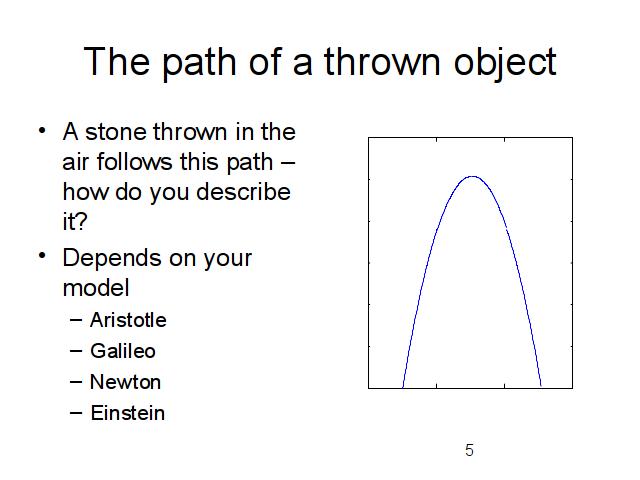
NOTES
Consider the motion of a thrown object: Aristotle described this motion as a brief deviation from the normal state of things - a stone belongs on the ground and will naturally seek to return to that condition (not location), after the impetus provided by the initial throw is dissipated. Galileo could apply mathematics to the motion and recognize the shape as a parabola, with the initial velocity constantly decreased by the constant acceleration of gravity - but though he had no model for the underlying cause of gravity, this model had immediate spinoffs in ballistics. Newton would call the motion not a parabola, but the tip of an ellipse, with one focus at the center of the Earth, and modeled the varying acceleration as due to an “action at a distance” force inversely proportional to the distance between the stone and the center of the Earth - and this model provided all that is needed for launching probes to other planets. Einstein modeled the stone's motion as following the shortest path in curved space-time - and this kind of model allows us to predict the future of the universe - and to use GPS to find our way home.
